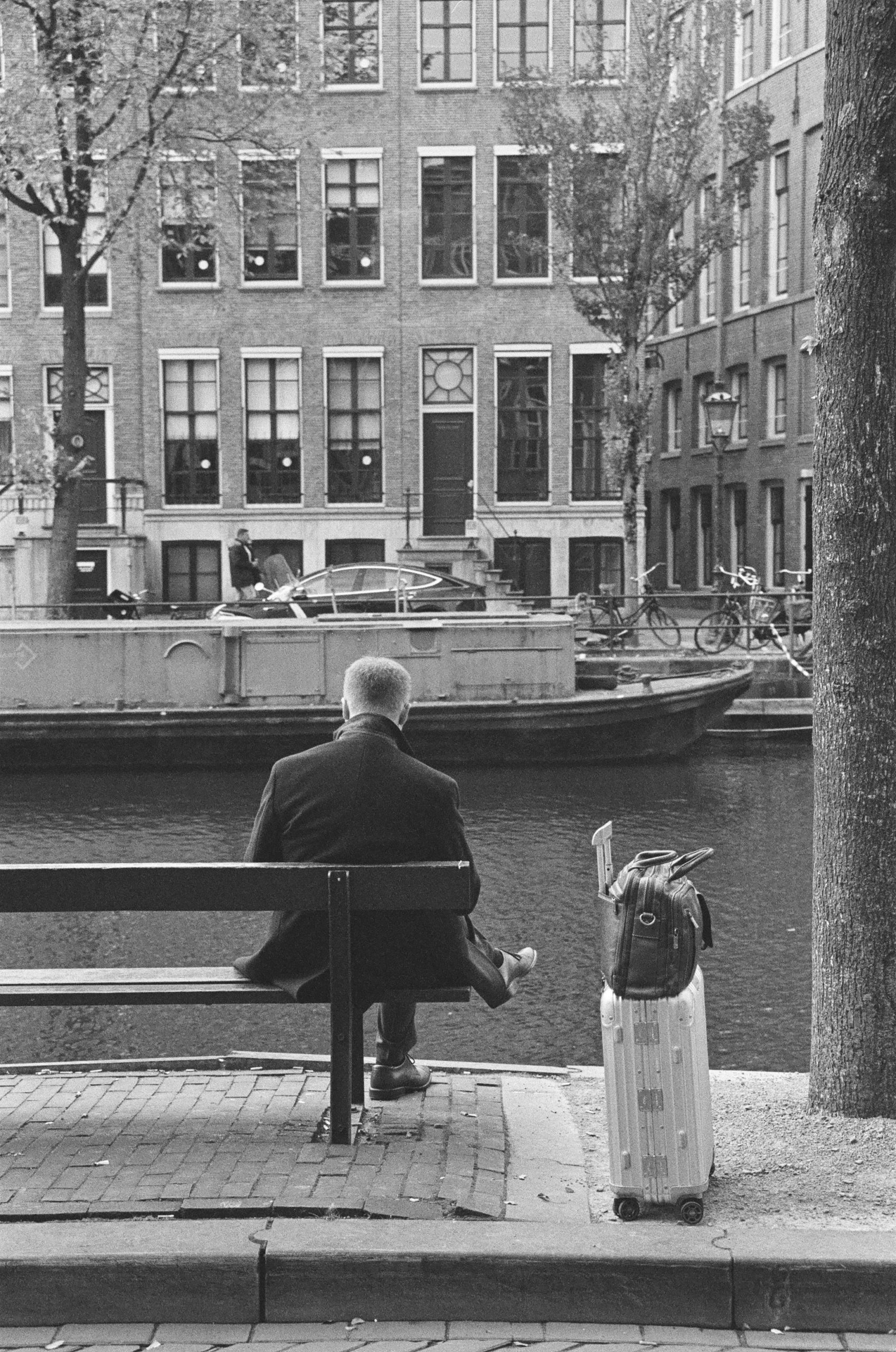
Going through any social psychology textbook, we see that the need to belong is a fundamental need that every person has. We need to feel at home – it’s as simple as that. But what do we need to belong to? Is it to other people? Or is it to a place that we call ‘home’? In other words, is attachment to physical places a thing?
Going through any social psychology textbook, we see that the need to belong is a fundamental need that every person has. We need to feel at home – it’s as simple as that. But what do we need to belong to? Is it to other people? Or is it to a place that we call ‘home’? In other words, is attachment to physical places a thing?

Photo by Sarah Laszlo

Photo by Sarah Laszlo
We all know the feeling when we fly back home after the vacation, twist the key in the lock of the main door of our home, hear the familiar squeaking and put the luggage on the floor. Then take our shoes off, sit on the couch, and sigh loudly. It was a nice holiday, but there is something to the saying ‘home sweet home.’ We take a deep breath – and realise that we’ve missed this familiar smell quite a lot. The smell of our home – it’s definitely a thing. Obviously, different buildings have different smells. But why do we like the smell of our home so much? Why are we so much at peace when we smell our home? Is it because of all the positive experiences and people we’ve had there, and by association with those experiences we like our place, or is there something unique and intrinsic to our physical home that makes us like it? In other words, do we get attached to places or the people in those places? Let’s discuss the evidence for either of those propositions and try to reach some consensus.
Place attachment is defined as the bonding between individuals and their important places (Giuliani, 2003). There is some evidence that we can get attached to physical places. In fact, the field of study concerning phenomena such as forced relocation is called disaster psychology (Brown & Perkins, 1992). There’s no doubt that people who are forced to physically relocate or migrate are under great mental strain, and even show signs of grieving. In some cases, their distress cannot be attributed to social attachment, since immigration includes whole families. Since it could also be the case that relocation circumstances are harsh, such as war or famine, immigrant distress might not necessarily be rooted in the loss of the previous physical space.
“Place attachment might be necessarily social, as a kind of ‘sense of community’ .”
Some researchers, such as urban sociologists, argue that we don’t get attached to physical environments as such and that place attachment is necessarily social, which can be summarised as a ‘sense of community’ (Woldoff, 2002). These scientists say that people are attached to places that facilitate social relationships and group identity, and that attachment to a place arises primarily because it symbolizes one’s social group and bonds within it. Lalli (1992) also notes that place bonding is intrinsically social because of place identity, or distinctiveness of a place, as it represents one’s group. For example, we can see place identity on a nationalist level, wherein a person becomes attached to the country on a physical level mostly because one feels like a citizen of that country, belonging to an extended group of people. Another finding that supports the social interpretation of place attachment is that in a study, greater social ties predicted local community attitudes and sentiments (therefore attachment) even in mass society where population size and density is large, and therefore we would expect these local community attitudes to erode. The fact that greater social ties nevertheless predicted local community attachment suggests that the notion of social basis for attachment is indeed generalizable to more mass settings. Arguments for the social basis of place attachment are not watertight, though. The notion that a construct such as social ties predict attachment might be only a part of the equation in determining whether we attach to a place, and there might be other variables involved.
Arguably, it might not be so simple to disentangle the sources of attachment that easily. Taking inspiration from the nature-nurture debate, it might be wiser to consider the interaction of factors as an influence on behaviour rather than a definitive and complete influence of either nature or nurture on behaviour, as has been the case for a long time in psychology. Similar thinking might be more appropriate also for place attachment – there might be components to this attachment. In fact, Scannell and Gifford (2010) have come up with a model, the person-process-place organizing framework, to define and describe place attachment.
“Taking inspiration from the nature-nurture debate, it might be wiser to consider the interaction of factors rather than a definitive and complete influence of either nature or nurture on behaviour, as has been the case for a long time in psychology.”
The person-process-place organizing framework suggests one’s attachment to a place is determined by three dimensions. The first dimension is the person dimension, which consists of one’s cultural group values or individual values – essentially what individuals bring with themselves into the physical space in question. The second dimension is the psychological process dimension, which includes someone’s affect, cognition, and behaviour in the place. It covers the associations that a person makes with a particular place. The third dimension is the place dimension itself, which comprises the place perceived as a social symbol (so place with reference to what it represents in a social context) and also its physical characteristics such as nature. The idea behind the physical features influencing attachment is the meaning-mediated model (Stedman, 2003), where a person becomes attached to the physical aspects of the environment because of some meaning attached to physical aspects themselves. For example, a developed area may symbolize community, or a natural area may symbolize environmental identity. Thus, all three processes are like threads that jointly determine place attachment. Some processes might be more salient than others depending on context, but the main idea remains: place attachment is not social-or-physical, it’s multifaceted.
All in all, it seems that we should be more ready to let go of viewing the world in dichotomous frameworks. Sure, looking at the world through simple lenses might be satisfying for the time being, but the reality seems to be more complex than that. Looking back at our holiday example from the beginning, the whiff of home might not be just social or physical, but might be an interesting amalgam of the value we’ve been brought up to place on home as a safe haven, the joyful and meaningful experiences we’ve had at our home, the people who we interacted with there, and the physical aspects of the place itself. Next time you come home from holidays, think about the complexity of influences that make you like the smell of your own home. <<
References
– Brown, B. B., & Perkins, D. D. (1992). Disruptions in place attachment. Human Behavior & Environment: Advances in Theory & Research, 12, 279–304.
– Giuliani, M. V. (2003). Theory of attachment and place attachment. In M. Bonnes,T. Lee, & M. Bonaiuto (Eds.), Psychological theories for environmental issues (pp.137–170). Aldershot: Ashgate.
– Lalli, M. (1992). Urban-related identity: theory, measurement and empirical findings. Journal of Environmental Psychology, 12, 285–303.
– Scannell, L., & Gifford, R. (2010). Defining place attachment: A tripartite organizing framework. Journal of Environmental Psychology, 30(1), 1–10.
– Stedman, R. (2003). Is it really just a social construction? The contribution of the physical environment to sense of place. Society and Natural Resources,16, 671–685.
– Woldoff, R. A. (2002). The effects of local stressors on neighborhood attachment. Social Forces, 81, 87–116.
We all know the feeling when we fly back home after the vacation, twist the key in the lock of the main door of our home, hear the familiar squeaking and put the luggage on the floor. Then take our shoes off, sit on the couch, and sigh loudly. It was a nice holiday, but there is something to the saying ‘home sweet home.’ We take a deep breath – and realise that we’ve missed this familiar smell quite a lot. The smell of our home – it’s definitely a thing. Obviously, different buildings have different smells. But why do we like the smell of our home so much? Why are we so much at peace when we smell our home? Is it because of all the positive experiences and people we’ve had there, and by association with those experiences we like our place, or is there something unique and intrinsic to our physical home that makes us like it? In other words, do we get attached to places or the people in those places? Let’s discuss the evidence for either of those propositions and try to reach some consensus.
Place attachment is defined as the bonding between individuals and their important places (Giuliani, 2003). There is some evidence that we can get attached to physical places. In fact, the field of study concerning phenomena such as forced relocation is called disaster psychology (Brown & Perkins, 1992). There’s no doubt that people who are forced to physically relocate or migrate are under great mental strain, and even show signs of grieving. In some cases, their distress cannot be attributed to social attachment, since immigration includes whole families. Since it could also be the case that relocation circumstances are harsh, such as war or famine, immigrant distress might not necessarily be rooted in the loss of the previous physical space.
“Place attachment might be necessarily social, as a kind of ‘sense of community’ .”
Some researchers, such as urban sociologists, argue that we don’t get attached to physical environments as such and that place attachment is necessarily social, which can be summarised as a ‘sense of community’ (Woldoff, 2002). These scientists say that people are attached to places that facilitate social relationships and group identity, and that attachment to a place arises primarily because it symbolizes one’s social group and bonds within it. Lalli (1992) also notes that place bonding is intrinsically social because of place identity, or distinctiveness of a place, as it represents one’s group. For example, we can see place identity on a nationalist level, wherein a person becomes attached to the country on a physical level mostly because one feels like a citizen of that country, belonging to an extended group of people. Another finding that supports the social interpretation of place attachment is that in a study, greater social ties predicted local community attitudes and sentiments (therefore attachment) even in mass society where population size and density is large, and therefore we would expect these local community attitudes to erode. The fact that greater social ties nevertheless predicted local community attachment suggests that the notion of social basis for attachment is indeed generalizable to more mass settings. Arguments for the social basis of place attachment are not watertight, though. The notion that a construct such as social ties predict attachment might be only a part of the equation in determining whether we attach to a place, and there might be other variables involved.
Arguably, it might not be so simple to disentangle the sources of attachment that easily. Taking inspiration from the nature-nurture debate, it might be wiser to consider the interaction of factors as an influence on behaviour rather than a definitive and complete influence of either nature or nurture on behaviour, as has been the case for a long time in psychology. Similar thinking might be more appropriate also for place attachment – there might be components to this attachment. In fact, Scannell and Gifford (2010) have come up with a model, the person-process-place organizing framework, to define and describe place attachment.
“Taking inspiration from the nature-nurture debate, it might be wiser to consider the interaction of factors rather than a definitive and complete influence of either nature or nurture on behaviour, as has been the case for a long time in psychology.”
The person-process-place organizing framework suggests one’s attachment to a place is determined by three dimensions. The first dimension is the person dimension, which consists of one’s cultural group values or individual values – essentially what individuals bring with themselves into the physical space in question. The second dimension is the psychological process dimension, which includes someone’s affect, cognition, and behaviour in the place. It covers the associations that a person makes with a particular place. The third dimension is the place dimension itself, which comprises the place perceived as a social symbol (so place with reference to what it represents in a social context) and also its physical characteristics such as nature. The idea behind the physical features influencing attachment is the meaning-mediated model (Stedman, 2003), where a person becomes attached to the physical aspects of the environment because of some meaning attached to physical aspects themselves. For example, a developed area may symbolize community, or a natural area may symbolize environmental identity. Thus, all three processes are like threads that jointly determine place attachment. Some processes might be more salient than others depending on context, but the main idea remains: place attachment is not social-or-physical, it’s multifaceted.
All in all, it seems that we should be more ready to let go of viewing the world in dichotomous frameworks. Sure, looking at the world through simple lenses might be satisfying for the time being, but the reality seems to be more complex than that. Looking back at our holiday example from the beginning, the whiff of home might not be just social or physical, but might be an interesting amalgam of the value we’ve been brought up to place on home as a safe haven, the joyful and meaningful experiences we’ve had at our home, the people who we interacted with there, and the physical aspects of the place itself. Next time you come home from holidays, think about the complexity of influences that make you like the smell of your own home. <<



